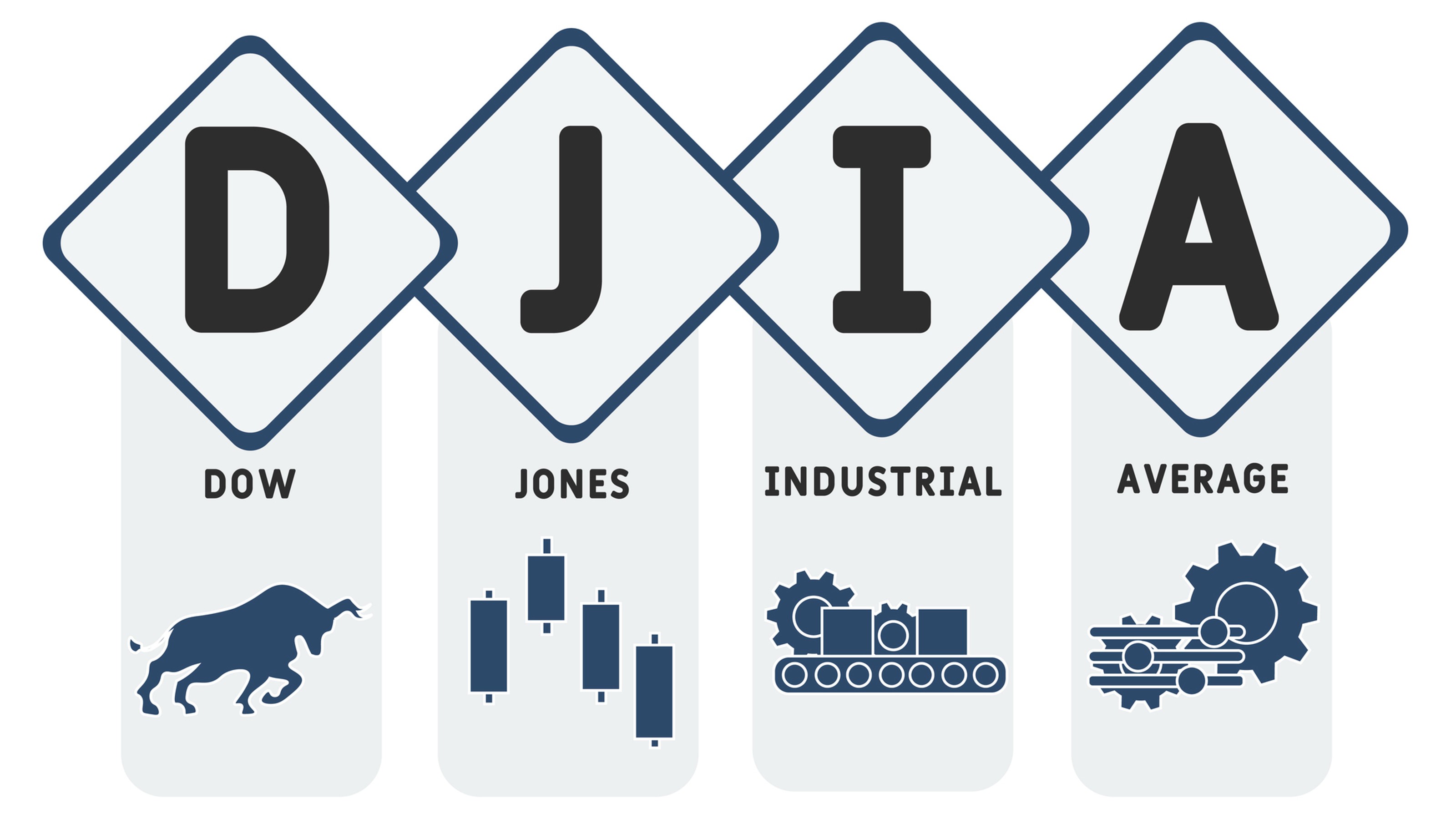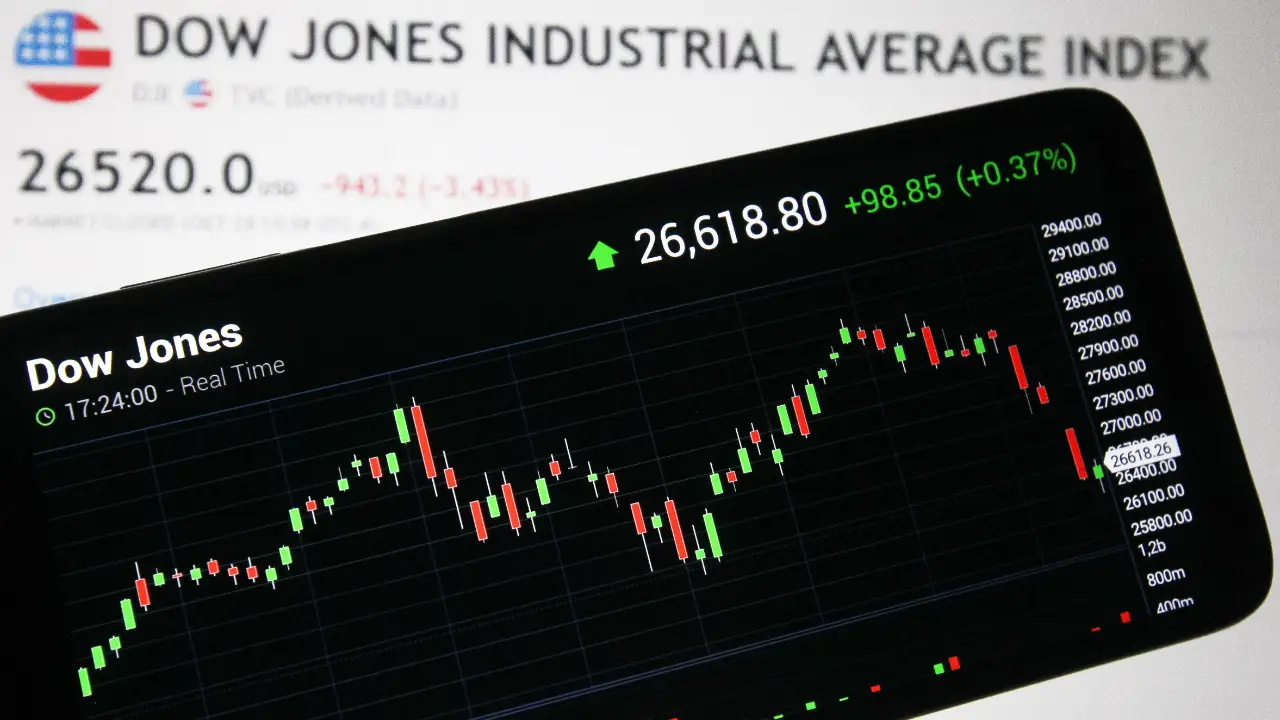What is Dow Jones Industrial Average? So you’ve probably heard about the Dow Jones Industrial Average on the news, but what exactly is it? The Dow Jones Industrial Average, or simply the Dow, is one of the most well-known stock market indices. It includes 30 of the largest and most influential public companies in the U.S., from a variety of industries like technology, retail, oil, and finance. The Dow is often used as a barometer for how the overall stock market and economy are doing.
When the Dow goes up, it usually means investors are optimistic and stock prices are rising. When it goes down, it suggests investors are worried and selling off shares. The companies in the Dow are leaders in their industries, so their stock performance provides insight into the health of the economy and different business sectors. The Dow has been around since 1896, so it has endured recessions, depressions, wars, and bull markets, making it a living piece of financial history.
What Exactly Is the Dow Jones Industrial Average?

The Dow Jones Industrial Average, or Dow, is one of the most well-known stock market indices. It tracks 30 large companies listed on stock exchanges in the United States. The Dow is often used as a broad measure of the overall U.S. stock market and economy.
How is the Dow calculated?
The Dow is a price-weighted index. That means higher priced stocks have more influence on the index. The Dow is calculated by summing up the stock prices of the 30 companies and dividing by a number called the Dow divisor. The divisor is adjusted to account for things like stock splits so that the index value remains consistent over time.
What companies are in the Dow?
The 30 companies in the Dow are major players in a variety of industries, from technology to retail to finance. Some of the most well-known companies in the Dow include:
- Apple (AAPL)
- Microsoft (MSFT)
- Nike (NKE)
- Walmart (WMT)
- Walt Disney (DIS)
- Goldman Sachs (GS)
- Coca-Cola (KO)
The companies in the Dow are reviewed periodically and can be replaced to keep the index up to date with the changing U.S. economy. For a company to be added to the Dow, it must be a leader in its industry with a strong reputation and wide interest from investors.
In summary, the Dow Jones Industrial Average provides a quick way to see how major companies and key sectors of the economy are performing based on changes in their stock prices. While it has some limitations, the Dow is still one of the most closely watched stock market indices.
History of the Dow Jones Industrial Average
The Dow Jones Industrial Average, or Dow, has been around since 1896, making it the second oldest U.S. market index. Originally, the Dow contained only 12 companies, but today consists of 30 large companies listed on major US stock exchanges like the New York Stock Exchange.
The Dow is calculated based on the stock prices of 30 major industrial companies and is used as a benchmark to indicate the health of the US stock market and economy. The companies in the Dow are leaders in industries like technology, retail, healthcare, finance, and more.
A Window into the Economy
The Dow provides a quick glimpse into how some of the largest companies are performing. Strong performance can signal an expanding economy and increased production, while weak performance may indicate slowing growth.
The Dow is not meant to be an indicator for the whole stock market, however. It only includes 30 companies, and only considers price, not market capitalization. The S&P 500 is a broader measure that tracks 500 large companies and is weighted by market cap. Still, the Dow remains an important barometer for the economy and investor sentiment.
Over its history, the Dow has seen many ups and downs. It suffered during the Great Depression, but then recovered and rallied during the subsequent decades. Despite downturns like Black Monday in 1987 or the Great Recession of 2008, the Dow has an upward trend, evidence of the resilience and continued growth of the U.S. economy over the long run. Overall, the Dow remains an influential indicator of America’s economic health and dynamism.
How the Dow Jones Industrial Average Is Calculated

The Dow Jones Industrial Average (DJIA), commonly known as “the Dow,” is one of the most well-known stock market indices. It is calculated based on 30 large companies listed on stock exchanges in the United States. But how exactly is the Dow calculated?
The Dow is a price-weighted index. This means that higher priced stocks have a greater influence on the index’s movements. The Dow index is calculated by adding up the stock prices of the 30 companies and dividing by a number called the Dow Divisor.
The Dow Divisor is adjusted to account for stock splits and other changes so that the Dow remains consistent over time. The Divisor makes sure that the Dow isn’t swayed too heavily by higher priced stocks. For example, if a $100 stock increases 10% and a $10 stock also increases 10%, the $100 stock would have a greater impact on the Dow without the Divisor.
Also Read :- Top Things To Know Before Market Opens US – 25 August 2023
The 30 companies in the Dow are some of the largest and most stable U.S. companies that represent a broad range of industries. Examples include Apple, Microsoft, Walmart, McDonald’s, and Walt Disney. The companies in the index change occasionally based on the recommendations of a panel that aims to include companies that best represent the U.S. economy.
While the Dow is an iconic measure of the stock market, many critics argue that it is an outdated index. It only includes 30 large companies and is price-weighted, so it may not reflect the overall stock market and economy accurately. However, the Dow remains an important symbol of the health and stability of corporate America and continues to be closely watched by investors and the public.
In summary, the Dow Jones Industrial Average is a way to gage the stock performance of major companies listed on U.S. stock exchanges. It is calculated based on the stock prices of 30 large companies, with higher priced stocks having a greater influence. The companies in the index are evaluated periodically to make sure it continues to represent the broad U.S. economy.
Components of the Dow Jones Industrial Average
The Dow Jones Industrial Average, also known simply as “the Dow,” is one of the most well-known stock market indices. It is composed of 30 of the largest and most influential public companies in the U.S. The companies represent a variety of industries, from technology and retail to banking and manufacturing.
Components
The 30 companies that make up the Dow are selected by a committee at S&P Dow Jones Indices. They aim to choose stable, well-established companies that are leaders in their industries. Some of the most well-known components of the Dow include:
- Apple (AAPL): The world’s most valuable company and a leader in consumer tech.
- Microsoft (MSFT): One of the largest software companies in the world.
- Johnson & Johnson (JNJ): A major pharmaceutical and consumer goods company.
- Walt Disney Company (DIS): A leader in mass media and entertainment.
- Visa (V) and American Express (AXP): Two of the largest credit card networks.
- Boeing (BA) and 3M (MMM): Iconic industrial companies.
- Verizon (VZ) and AT&T (T): Two of the biggest telecommunications providers.
The index is price-weighted, meaning higher priced stocks have a greater influence on the average. The committee reviews the index components periodically and makes changes to ensure it continues to reflect the U.S. economy. Companies are only replaced under extreme circumstances, such as bankruptcy, to maintain stability in the index.
The Dow provides a quick glimpse into how some of the most significant companies in the U.S. economy and stock market are performing. Although it only includes 30 companies, they represent a variety of important industries that drive economic growth. The Dow is a closely watched barometer of the overall stock market and U.S. economy.
Importance and Criticisms of the Dow Jones Industrial Average
The Dow Jones Industrial Average (DJIA) is one of the most well-known stock market indices. It provides a quick way to gage the health of the U.S. stock market and economy. However, the DJIA has some important limitations and criticisms to keep in mind.
Importance
The DJIA includes 30 of the largest and most stable U.S. companies. Called “blue chip” stocks, they are industry leaders and household names like Apple, Microsoft, and Walmart. Because these major companies drive a large portion of the overall economy, the DJIA is a barometer for the stock market and investor sentiment. If the DJIA is up, it signals a bullish outlook. If it’s down, it indicates bearish sentiment.
Criticisms
However, the DJIA only represents a tiny fraction of the thousands of stocks traded on U.S. exchanges. It is not as broad an measure as the S&P 500 index which covers about 80% of available market capitalization. The DJIA also uses a price-weighted method which can give more influence to higher priced stocks. This means a $50 move in Apple’s stock price, for example, will have a much bigger impact on the DJIA than a similar move in a lower-priced component like Walmart.
The DJIA also excludes some of the fastest growing technology and biotech companies that drive today’s economy. For these reasons, the DJIA may not always accurately reflect the overall health and performance of the stock market. It provides a quick snapshot, but for a more robust and balanced view, its best considered along with other indices like the S&P 500 and Nasdaq.
While an important barometer, the DJIA has notable shortcomings. Still, it remains an enduring symbol of U.S. economic strength and dynamism. By understanding both its significance and its limitations, you can gain useful insight into the stock market and make smarter investment decisions.
Conclusion
So now you’ve got the scoop on what the Dow Jones Industrial Average is all about. This iconic stock market index has been around for over a century and continues to be one of the most well-known measures of how companies are performing on Wall Street. Even though it only tracks 30 major companies, the Dow is seen as an important indicator of the overall health and stability of the economy.
The next time you hear a news report about how the Dow rose or fell that day, you’ll understand exactly what they mean and why it matters. While there are more comprehensive indexes out there, the Dow remains an influential symbol of American business and innovation. Despite its flaws and limitations, it has stood the test of time and proven itself as a useful benchmark for gaging the country’s economic progress. Not bad for an index that started out with just 12 transportation companies in the late 1800s!
The markets will always have their ups and downs, but you can bet the Dow Jones Industrial Average will continue on for decades and centuries to come. Stay tuned to see what new milestones it achieves in the next 100 years!





